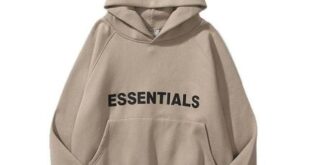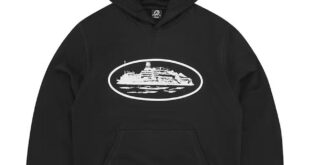What is a Circular Economy?
A circular economy is an alternative to the traditional linear economy, which follows a “take, make, dispose” model. In a circular economy, the focus is on reusing, repairing, refurbishing, and recycling materials and products, keeping them in use for as long as possible. This not only reduces waste but also minimizes the need for raw material extraction, thereby protecting natural resources. Visit now Eric Emanuel Shorts
In the fashion industry, this means rethinking every stage of the product lifecycle — from design and manufacturing to consumption and disposal. It’s about creating a system where clothes are designed to last, recycled at the end of their life, and reused instead of ending up in landfills.
The Fashion Industry’s Environmental Impact
The fashion industry is a major contributor to global pollution and resource depletion. Consider these startling facts:
- The fashion industry is responsible for about 10% of global carbon emissions.
- It consumes approximately 79 billion cubic meters of water each year.
- Every second, the equivalent of a garbage truck full of textiles is dumped in a landfill or incinerated.
- The production of synthetic fibers like polyester contributes to microplastic pollution, which ends up in oceans and water supplies.
These figures underscore the urgent need for a shift towards more sustainable practices. The linear model that has dominated fashion for decades is unsustainable. Fast fashion, which encourages overconsumption, quick disposability, and low-quality products, is one of the leading culprits of waste in the industry.
Benefits of a Circular Economy in Fashion
Reducing Waste
One of the most significant benefits of a circular economy in fashion is the reduction of waste. By recycling textiles, repurposing materials, and designing clothes to be more durable and versatile, the industry can drastically cut down on the amount of waste it generates. This will lead to fewer garments ending up in landfills and incinerators, reducing the industry’s overall carbon footprint.
Resource Efficiency
A circular economy also promotes more efficient use of resources. In a world where natural resources are becoming increasingly scarce, finding ways to use less water, energy, and raw materials is critical. Circular systems encourage the use of recycled or organic materials, reducing the demand for virgin resources and lowering the environmental impact of garment production.
Encouraging Innovation
As brands and manufacturers embrace circular models, they are driven to innovate. This innovation could lead to the development of new materials, technologies, and business models. For instance, many companies are experimenting with biodegradable textiles, eco-friendly dyes, and digital platforms that allow customers to resell or rent clothing. These innovations not only benefit the environment but also present opportunities for economic growth and job creation within the sector.
Meeting Consumer Demand for Sustainability
Today’s consumers are more eco-conscious than ever before. They are demanding greater transparency and sustainability from the brands they support. By adopting circular practices, fashion companies can align with this growing demand and strengthen their brand loyalty. Sustainable and ethical fashion is not just a passing trend but a movement that will continue to gain momentum.
Key Strategies for Implementing a Circular Economy in Fashion
1. Design for Longevity
The first step towards a circular fashion industry is to design clothes to last. This means using durable materials, incorporating timeless styles, and focusing on quality craftsmanship. Fast fashion brands need to move away from trends that encourage disposability and instead create garments that consumers will want to wear for years.
2. Recycling and Upcycling
Recycling and upcycling are essential components of a circular economy. Fashion brands should invest in recycling infrastructure and partner with textile recycling companies. Additionally, upcycling old garments into new, fashionable items can give clothes a second life and reduce the need for virgin materials.
3. Resale and Rental Models
The resale market has seen significant growth in recent years, with platforms like Depop, ThredUp, and Poshmark becoming household names. Brands can capitalize on this trend by offering their own resale services, allowing customers to return old items for store credit or discounts on future purchases. Similarly, rental services provide an alternative to buying new clothes, particularly for special occasions or high-end fashion.
4. Circular Supply Chains
Circular supply chains involve creating systems where resources are used and reused as efficiently as possible. This requires collaboration between suppliers, manufacturers, and retailers to ensure that materials are sourced sustainably, garments are produced with minimal waste, and end-of-life products are either recycled or biodegraded.
5. Consumer Education
Educating consumers about the benefits of a circular economy and how they can contribute is crucial. Brands need to communicate the value of sustainable fashion, encouraging customers to make more informed choices, such as buying higher-quality garments, supporting ethical brands, and recycling old clothes.
Challenges to Overcome
While the transition to a circular economy in fashion is necessary, it is not without challenges. Scaling circular business models requires significant investment in infrastructure, technology, and consumer education. Moreover, government policies and regulations will need to support these efforts by incentivizing sustainable practices and discouraging wasteful behaviors.
Brands must also navigate the complexities of supply chains, ensuring that every part of the production process aligns with circular principles. Collaboration between brands, suppliers, and consumers is essential for creating an industry-wide shift.
Conclusion
The shift towards a circular economy in the fashion industry is no longer optional—it’s inevitable. With the mounting environmental pressure and changing consumer expectations, brands that fail to adapt risk becoming obsolete. By embracing sustainable practices, innovating new materials and business models, and educating consumers, the fashion industry can reduce its environmental footprint while continuing to thrive.
 Our Gateway to Insightful Blogging Exploring Ideas, Sharing Knowledge, Inspiring Minds
Our Gateway to Insightful Blogging Exploring Ideas, Sharing Knowledge, Inspiring Minds



